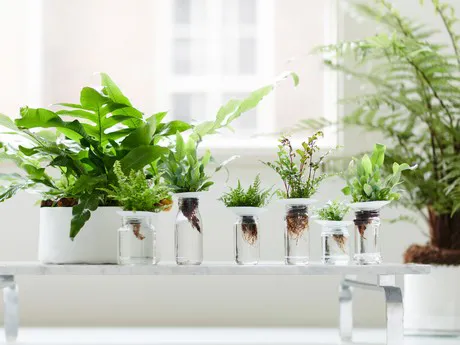From bushy to stylised, and from dark green to silvery grey-green: ferns come in many forms with leaves that can also vary considerably. One has curls, the other more feather-like, and a third has no frills at all. Together they form an attractive group of green plants that fit with the growing interest in botanical elements and collections in the home. As a bonus, ferns also help keep the air in the home healthy.
 Credit: Thejoyofplants.co.uk
Credit: Thejoyofplants.co.uk
Origin
Ferns are amongst the world’s oldest plants. Fossil remains have been found dating back some 420 million years, and for a long time (tree) ferns were the most common plant on the planet's surface. Seams of coal are made up of the residue of dead ferns, amongst other things. There are some 10,000 different species that grow anywhere that gets some rain. Only in deserts and locations with permanent snow are there no ferns in the landscape. The ferns used as houseplants come from tropical and subtropical regions.
Spore plant
Ferns propagate themselves by means of spores. Spore casings are usually located on the underside of the leaf: along veins, on leaf edges, on the end of the leaf or scattered. Once the spore casings are ripe, they burst open and the spores are dropped on the damp places where ferns naturally grow.
Range
The most popular ferns for use as houseplants are the staghorn fern (Platycerium), bird’s nest fern (Asplenium), deersfoot fern (Davallia), blue star fern (Phlebodium), maidenhair fern (Adiantum), holly fern (Cyrtomium), brake fern and ribbon fern (Pteris), and cliffbrake fern (Pellaea). Species with harder and tougher foliage are easier to look after because they evaporate less moisture. Bird’s nest ferns and staghorn ferns are best suited for use as hanging ferns.
Sales and display for ferns
A modern way to display ferns is to place various species in a row in identical jars like in a laboratory. Also play with the various ways in which they can be used: show hanging varieties, but also ferns placed on water (evaporation usually creates good humility) and in a moss ball (kokedama) on a dish. Bird’s nest fern and staghorn fern can also cope with being mounted on a piece of wood, for example.
For more information:
Thejoyofplants.co.uk
